How to trim spirea?
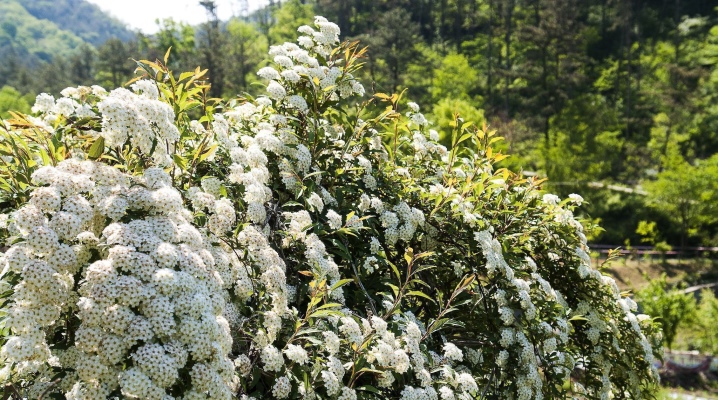
Any ornamental shrub decorates the landscape if it has a beautiful view. Therefore, he needs timely pruning. Spirea is no exception. There are different types of spirea, so pruning it has certain features.
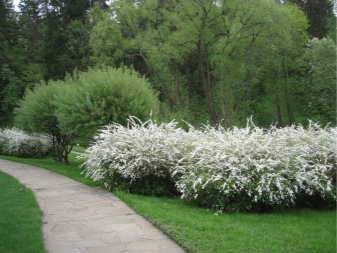
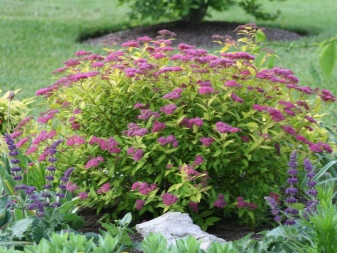
What is a haircut for?
Trimming the spirea is a necessary component of caring for it. As the shrub grows, the shoots spread out in all directions, its shape takes on an unattractive appearance, and, in addition, over time, the branches dry out. Timely haircut of the spirea returns its beautiful silhouette and promotes rejuvenation.
In summer varieties of shrubs, inflorescences are formed on the shoots of the current season, so pruning gives them not only a decorative look. It is also needed to stimulate profuse flowering. In addition, after summer pruning, spirea can bloom again in September.
In some species of spirea, shoots grow directly from the roots. As a result, the bush expands and covers a large area. To avoid unwanted active growth and maintain the original size of the shrub, it is necessary to regularly remove some of the young shoots.
Pruning also strengthens the root system and stimulates new shoot growth, making the plant more lush.
Dry, unremoved branches are a place for the accumulation of harmful insects and the development of fungal infections, and this can cause various diseases. Therefore, shearing helps to maintain the health of the plant.
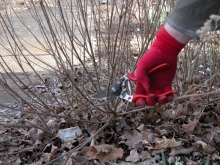
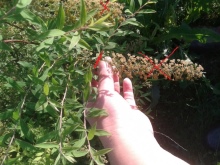

Optimal timing
Periodic pruning is required spirea throughout the growing season, it can be carried out both in spring, and in summer, and in autumn. The shrub tolerates a haircut well and forms after it new strong shoots and a lot of inflorescences.
The timing of the haircut is due to the type of spirea. It is of 2 types: spring-flowering and summer-flowering. Plants differ in the way they form flower buds. Shrubs with summer flowering form buds of inflorescences on the processes of this season and bloom in the same year in summer. In spring-flowering spirea, buds of inflorescences are formed on young new shoots, but it will bloom only next year in spring.
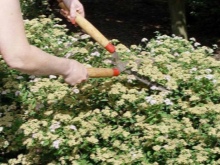
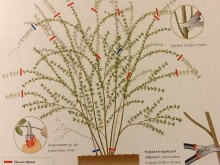
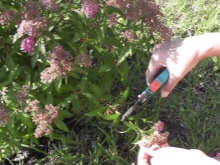
Spring-flowering varieties can be cut annually in early spring (in March-April), while cutting off only dried branches or shortening frostbitten shoots. To give the shrub a decorative appeal, you can also cut off dried inflorescences at the end of flowering. (in the last days of May - early June).
Summer-flowering spirea is cut off after it has faded - in late July or early August. In early spring or autumn, rejuvenating pruning is done for all spireas, regardless of the type. An autumn haircut must be carried out 15-20 days before the onset of frost, so that the plant enters winter with healed sections. Additional trimming of the spirea for the winter is not required.
Spring sanitary pruning is also done for all spireas in warm weather, but before the buds swell.
Weakened, diseased and dry branches are not only possible, but also necessary, regardless of the season. Stimulating pruning is carried out in early spring, and formative pruning either early in spring or autumn.
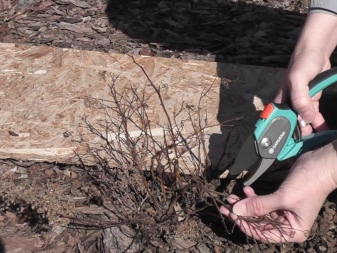
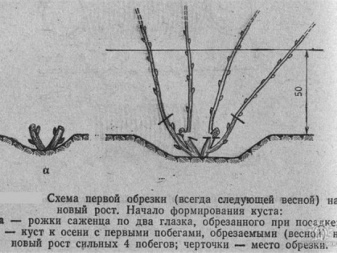
Types of trimming
The types of pruning differ depending on the age and purpose of breeding the spirea. The age of the plant directly affects the pruning methods, which has the following features:
- in the first and second years of growth in a shrub, it is necessary to shorten all branches;
- in a 3-year-old spirea, three-year-old branches are completely cut off, since they thicken the bush, and almost do not form inflorescences;
- you can start pruning spirits growing separately when the shrub reaches 3-4 years of age.
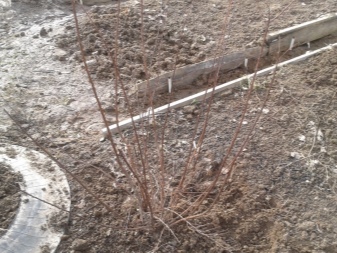
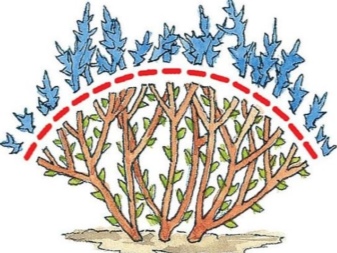
For spirea, these types of haircuts are used.
Sanitary. Spirea shoots can begin to dry for 2-3 years of growth. Often the end of the shoots in winter is damaged by frost. Such branches are a source of fungal and other infections and a habitat for pests. To protect the spirea from diseases and give it decorative beauty, sanitary pruning is carried out.
It consists in removing:
- all diseased and damaged branches, as well as weak processes in the middle of the bush;
- broken shoots, since they will not recover, but they can become a source of infections in the areas of breakage;
- frost-bitten tops of branches and dried inflorescences not removed in summer.
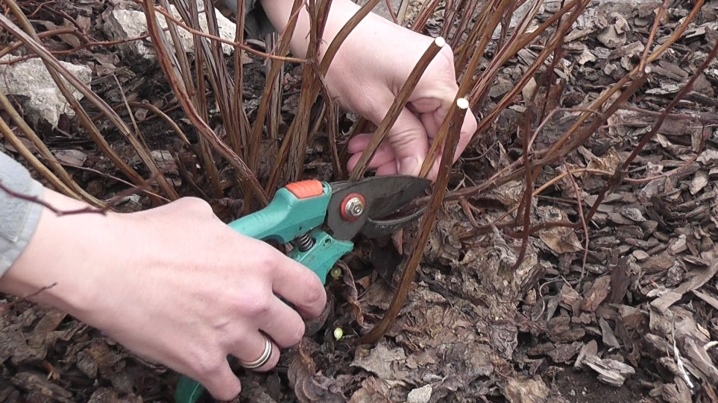
In spring-flowering spirea, underdeveloped and obsolete (7-10-year-old) branches are subject to removal. Sanitary pruning promotes the growth of healthy shoots and an increase in the number of inflorescences.
Stimulating. This type of trimming consists of shortening the branches in order to form young growth. Old branches are cut to a height of 25-30 cm from the ground, which improves lighting and aeration of the bush. As it grows, the bush, thanks to young shoots, takes on lush forms and many inflorescences. To stimulate flowering in spirea, the ends of the shoots are cut off by 1/3 of the length. This leads to the formation of lateral processes with inflorescences. Incentive pruning should be done every fourth year.

Formative. It consists in trimming part of the shoots, stimulating the growth of young shoots. It can only be done by bushes that have reached 4-5 years of age. The center of the plant is freed from thin shoots and branches growing inside the bush, cutting them to the ground so that not a single bud remains. All non-flowering and shorter, with many branches, shoots are also cut off. These are usually the oldest branches growing in the center of the bush. It is also necessary to remove low-lying, growing along the ground shoots, as well as incorrectly oriented, intersecting, growing at an acute angle and shoots competing with skeletal branches.
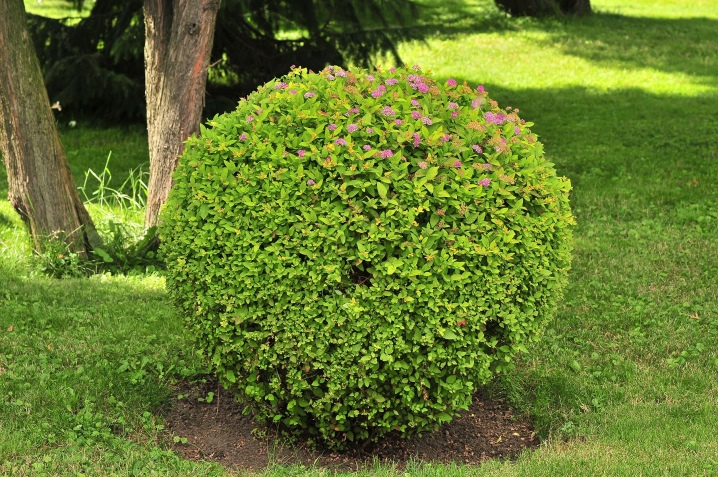
To improve branching, the longest processes are shortened by 20-25 cm. A shaping haircut can be done in 2 ways.
- Cardinal pruning. In this case, the bush is given the required shape by cutting off the required number of branches.
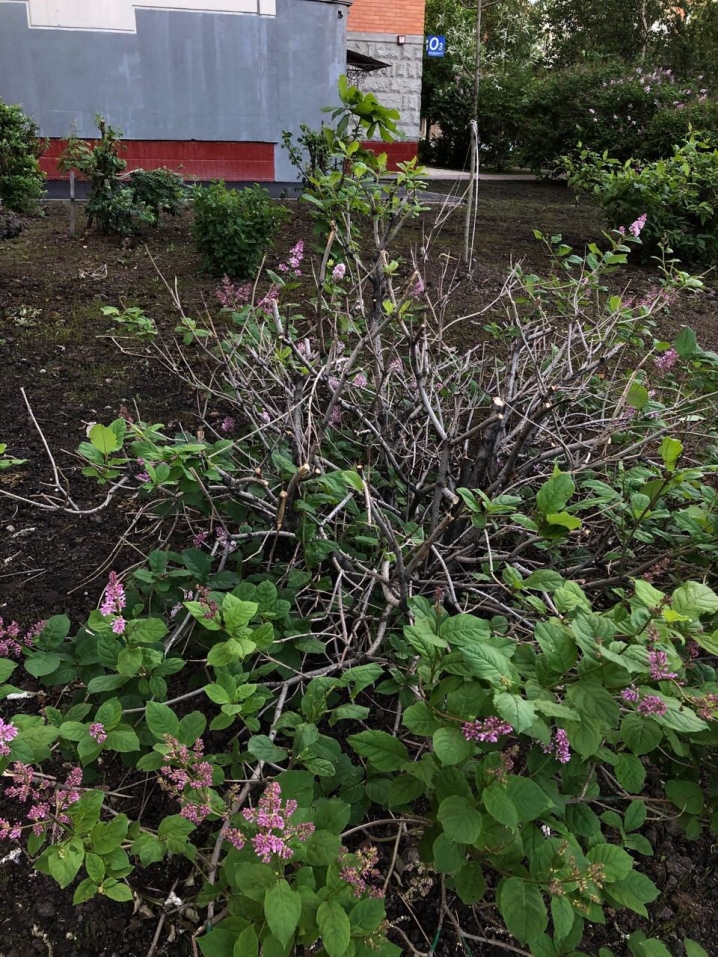
- Moderate haircut. It involves adjusting the already created outline of the bush. Formative pruning facilitates further care of the spirea. A properly formed crown improves illumination and aeration of the bush, which means it reduces the risk of various diseases.
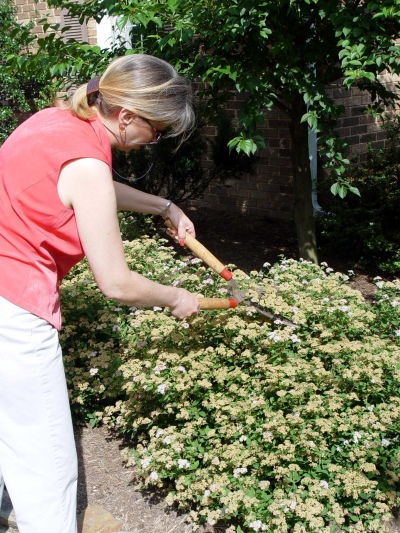
Anti-aging. With this type of pruning, all branches are cut to the very basal neck. In rare cases, up to 7 annual shoots are left. In the spring, after the branches are completely cut, young shoots will sprout from the dormant buds. Certain types of spirea can live up to 20-25 years of age, and a separate stem up to 6-7 years. However, the outdated bush loses its decorative appearance, it is more often young specimens susceptible to various diseases. Rejuvenating pruning is also carried out in order to restore the attractiveness of the plant, correct defects in the shape of the crown, and heal damage to the branches.
Usually such a haircut is used for shrubs that have reached the age of 10-12 years. This measure will extend the life of the spirea for another 5-7 years.

Step-by-step instruction
Spirea will have a beautiful decorative appearance if the pruning is done correctly. For novice florists doing this procedure for the first time, it is important to know the sequence of its implementation. Beginners should follow the step-by-step scheme for forming the skeleton of a summer-flowering spirea shrub and follow these steps.
1 year after disembarkation. All branches should be cut half the length and removed from below damaged, weak, abnormally growing - curves directed inward to the crown and breaking symmetry. The main processes are shortened by 2.5-5 cm for well-developed outward buds. As a result, at the end of August - September, powerful shoots are formed from the upper buds of last year's shoots. They will bloom in the summer next year.
2 years. In the bush, last year's shoots are cut off by half the length to an external powerful bud, and all thin and underdeveloped branches are removed. In the summer, as the spirea fades, dry inflorescences are gradually cut off.
3rd and subsequent years. All last year's processes are cut into 1-2 buds.
As a result of this pruning, the main skeleton is formed. Further annual pruning of an adult summer-flowering spirea should be carried out as follows.
For information on how to trim a spirea, see the next video.
In the spring, after the snow melts, sanitary pruning is carried out in stages:
first, all dry, diseased and frozen processes are removed;
then remove thin extra branches thickening the bush;
healthy powerful branches are shortened to a height of 20-25 cm.
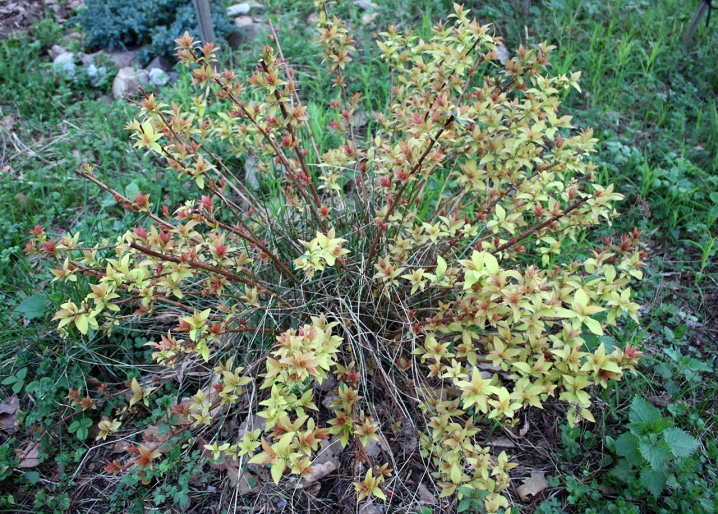
In the summer, pruning consists of:
in cutting off the plant at the end of the flowering of dry inflorescences, in order to avoid the formation of seeds, otherwise the shrub may stop growing;
in the regular inspection of the shrub and the removal of all dry, broken or with signs of disease branches.

Pruning spring-flowering spirea is as follows:
- in the fall, you need to remove all underdeveloped shoots and cut off a quarter of all shoots to the ground;
- to activate tillering and flowering, it is necessary to cut off only a third of the one-year-old shoots;
- dry inflorescences can be cut in the summer after flowering, but this is usually done in the fall;
- non-branching branches are cut to 1/2 the length, and in branched branches, 1/3 of the length of the process is removed from the branch.
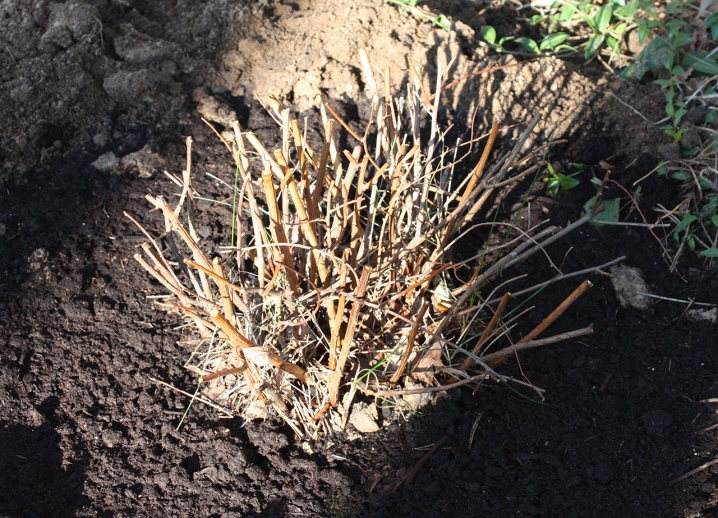
When pruning, you need to adhere to the following rules:
the cuts must be made even and smooth, avoiding splitting of the stumps;
if the branch is cut without leaving a hemp, then the cut must be done at an angle of 45 degrees;
pruning must be done carefully, without damaging adjacent branches.
thick sections must be lubricated with garden var.
Every seventh year, the spirea is cut to hemp to form a young bush from a new growth. This pruning is best done in the fall. To reduce the size of the bush, but increase its density, old branches should be shortened.
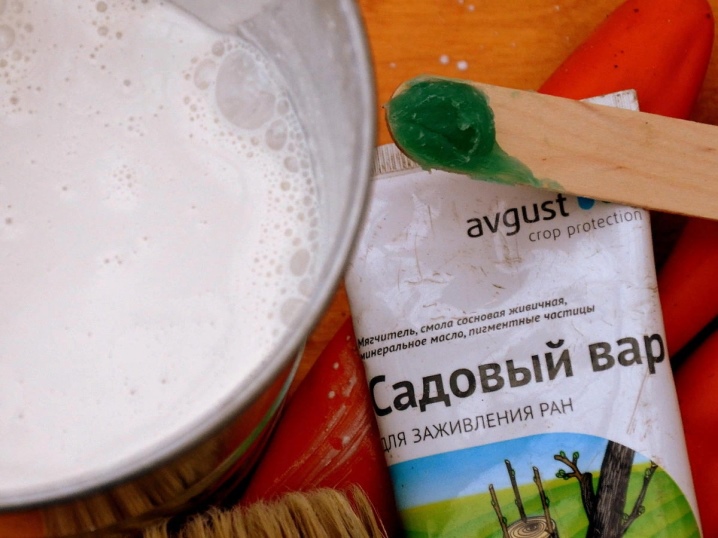
It is possible to form a bush with a beautiful decorative appearance only within a few years. Formative pruning is carried out in the following sequence:
in a 3-year-old bush, 5 or 6 of the strongest young shoots are determined;
other branches are cut off entirely;
at the end of flowering, cut off weak and thin processes;
subsequently, every 2-3 years, all aged branches are cut off.
Spirea lends itself well to formation. Usually, the formative pruning is done in the form of a ball to give the spirea a beautiful appearance. However, it can be given any other shape - pyramids, squares or otherwise. Curly trimming of the spirea should be regular. Shape adjustments can be made throughout the season.
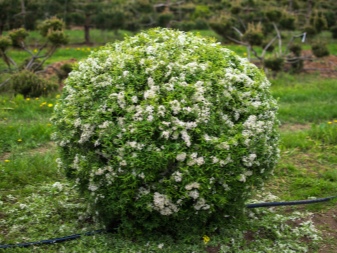
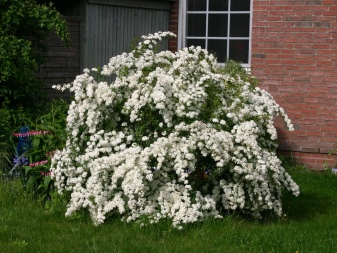
Spirea is often planted to create a hedge. Spirea should be trimmed in it from 2 years of growth. This should be done in the fall - in September-October. Annual shoots are cut to 1/3 of their length. After 4 years, the shoots are already cut off half the length. In the future, hedges from young spirea are cut 1-2 times per season, and from adults - up to 3-4 times. The first haircut is carried out in the spring, and the subsequent ones - as the silhouette is disturbed.
After such a haircut, not only the aeration of the plants improves, it also contributes to the decorative effect, density and compactness of the shrub.
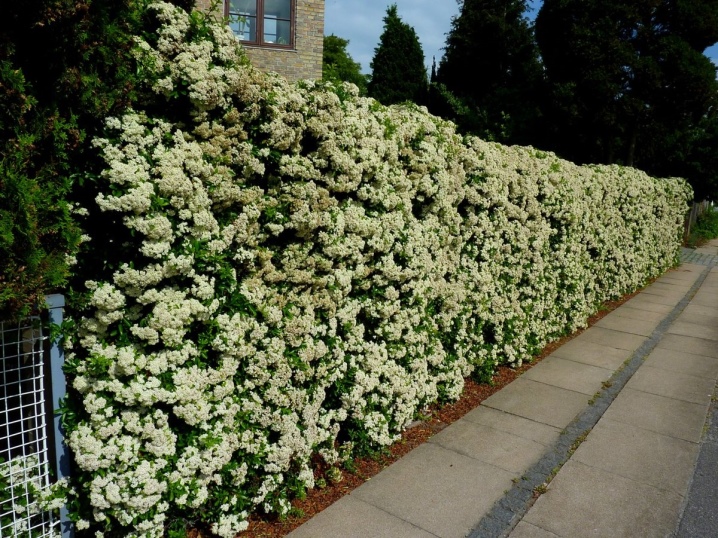
Certain varieties of spirea have their own pruning characteristics. Spirea "Douglas" and "Boomald" can be cut for the first time only for 4 years of growth.Dwarf varieties (Golden Carpet, Magic Carpet, Candlelight) are cut into 2-3 powerful buds, and the length of the cut off shoots can be from 10 to 15 cm.

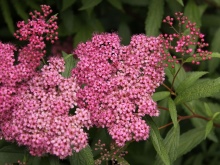
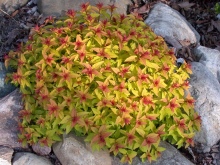
Further care
Taking care of the spirea after pruning is easy. It is necessary for quick recovery after the removal of branches and part of the shoots. Care consists in such procedures.
- Watering. After spring pruning, the plant should be well watered. In the future, it is often necessary to water the shrubs only in the absence of rain for 2 weeks or more, or in too hot weather. The usual watering regime is 1 time in 15 days, 1.5 buckets under a bush. Watering is best done in the evening, pouring water under the root. Watering is recommended to be accompanied by loosening of the soil.
- Weeding the spire is optional, but it is required to periodically trim the grass under the bush, since tall weeds, growing through the crown, can ruin the decorative appearance of the bush.
- Top dressing. The first feeding is done after the spring haircut. You can apply top dressing from complex mineral and organic fertilizers. For this, mineral fertilizers containing nitrogen, phosphorus, potassium, or trace elements such as the Kemira-Lux preparation are used. Compost and peat are used as organic fertilizers.
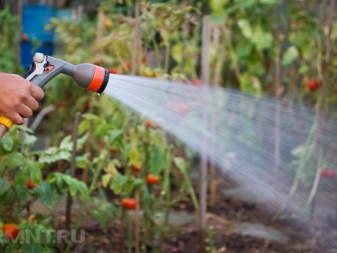

The second feeding is carried out after the summer haircut. You can also use both types of fertilizers. A good effect is given by feeding with infusions of manure, chicken droppings (10%), herbs with bread. You can use a mixture of organic matter and mineral fertilizers, which is prepared as follows:
insist in 5 parts of water 1 part of manure for 2 weeks;
10 g of superphosphate is dissolved in 1 liter of hot water and allowed to stand for 24 hours.
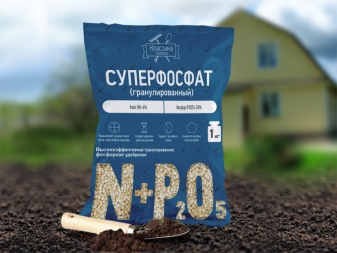
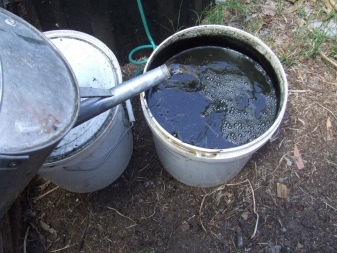
After that, both solutions are mixed and diluted with water in a ratio of 1: 10 before use. Fertilizer should be applied under the bush in a well-moistened soil. Then, after a certain time, the soil is watered again over a bucket under the plant.
The third time the spirea should be fed in the fall, using the same fertilizers.
Correctly carried out pruning will make the spirea a real decoration of any landscape. The use of various varieties of this shrub will extend its flowering until autumn.
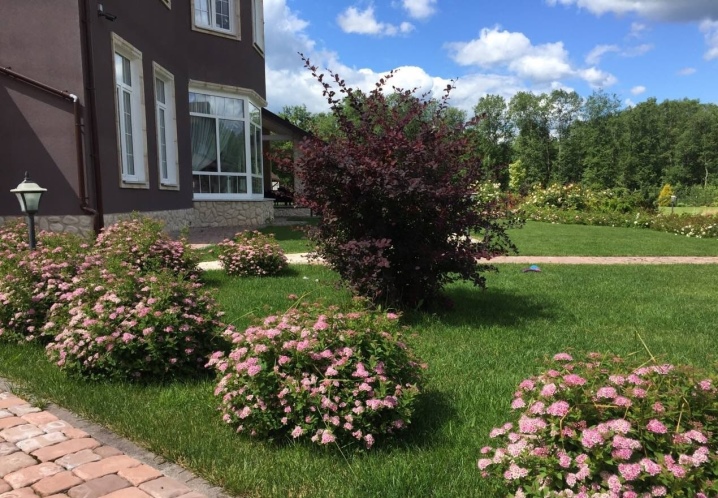

































































The comment was sent successfully.